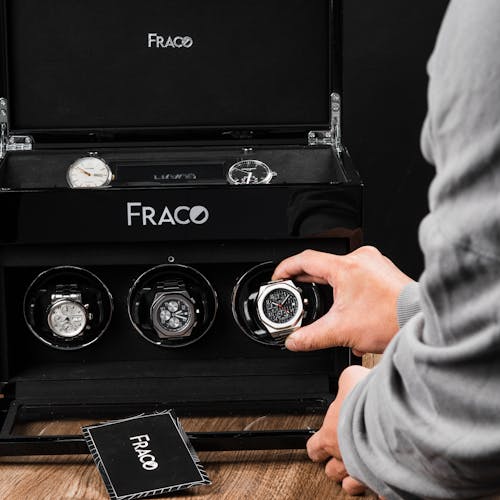A Column by thewatchaficionado.com
For fifteen years at thewatchaficionado.com, we’ve curated some of the world’s most exquisite timepieces. Our clients possess a profound appreciation for horology—they don't just wear a watch; they become a steward of its legacy.
In this journey of stewardship, few accessories stir as much debate as the watch winder. These meticulously crafted boxes promise continuous, effortless motion, ensuring your self-winding treasures are always ready to wear. They are a convenience, certainly. But for the true aficionado, the winder risks diluting the very essence of mechanical watch ownership.
Here is why we believe the most passionate collectors understand that a static watch is not a problem to be solved, but a quiet, beautiful opportunity.
1. The Lost Ritual of the Initial Wind
The self-winding movement is a marvel of engineering, but its poetry lies in its re-awakening. When you retrieve a dormant timepiece from your safe or vault, you are invited to participate in a profound horological ritual: the initial wind.
As you turn the crown, you are not merely charging a spring; you are personally re-establishing the kinetic connection with the mechanism. You feel the subtle resistance, hear the gentle whir of the gears, and watch as the sweep second hand springs back to life.
A winder robs you of this moment. It delivers a watch that is always on, eliminating the visceral, personal act of bringing a sleeping masterpiece back into the living moment.
2. The Unnecessary Pursuit of Perpetual Motion
The primary mechanical argument against the winder is simple: a watch is designed to be maintained at regular service intervals. Putting a watch on a winder subjects it to continuous, low-level wear and tear—24 hours a day, 365 days a year—even when it's not on your wrist.
While a high-end movement is robust, continuous motion means continuous friction. The lubricants in your watch are under constant stress, and tiny, microscopic particles of wear are always in circulation. By allowing a watch to rest, you are giving the oil and the components a well-deserved reprieve.
A watch that is worn 2-3 times a month and occasionally hand-wound will likely require service less frequently than a watch that has been on a winder for the same period.
3. The Choice of the Moment
A true collection is defined not by perpetual readiness, but by thoughtful selection.
When you walk to your safe and choose the day's companion, the necessity of setting the time and date is a deliberate, mindful part of the process. It forces you to pause, to look at the complication you are adjusting, and to acknowledge the passing of time and the date you are about to step into.
The winder caters to impatience. The static watch encourages reflection. It turns the act of simply wearing a watch into an event—a selection worthy of the mechanical art you are strapping to your wrist.
4. An Appreciation for the Service Interval
To own a fine mechanical watch is to accept the responsibility of its care. For some, the service interval is a burden. For the aficionado, it is a scheduled pilgrimage.
The eventual need for service is not a sign of failure, but a sign of use and care. By minimizing unnecessary wear through constant winding, you are managing your watch’s life cycle. When the time for service does come, you send it away knowing it’s truly earned its trip to the master watchmaker, having rested when not needed.
The Verdict from the Aficionado
We are not suggesting you discard your winder if you value the ultimate convenience. However, if your journey into luxury watch collecting is driven by passion, ritual, and a deep respect for the micro-mechanics on your wrist, we encourage you to try leaving your most treasured pieces at rest.
Let them sleep in their velvet-lined solitude. Wait for that moment of inspiration, open the box, and feel the powerful connection as you bring the watch—and its complex, tiny world—back to life with a turn of the crown.
Discover the world's finest timepieces, ready to be awakened, only at thewatchaficionado.com.



Share:
G-SHOCK x Strength in Pink: A Timepiece That Honors Resilience
When Street Meets Time: Inside the J Balvin × G-Shock “Ma G” Collab